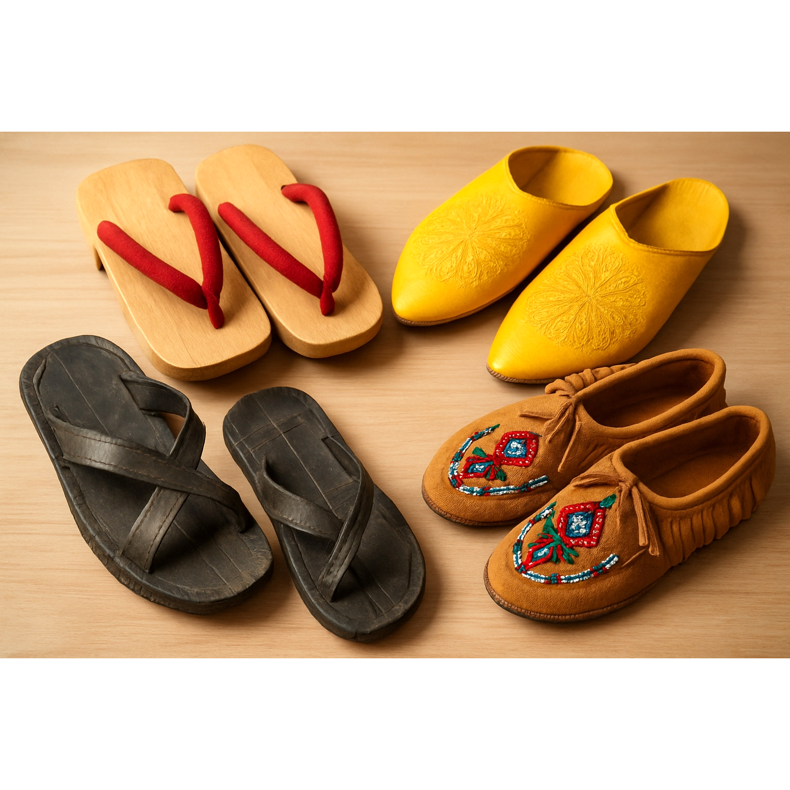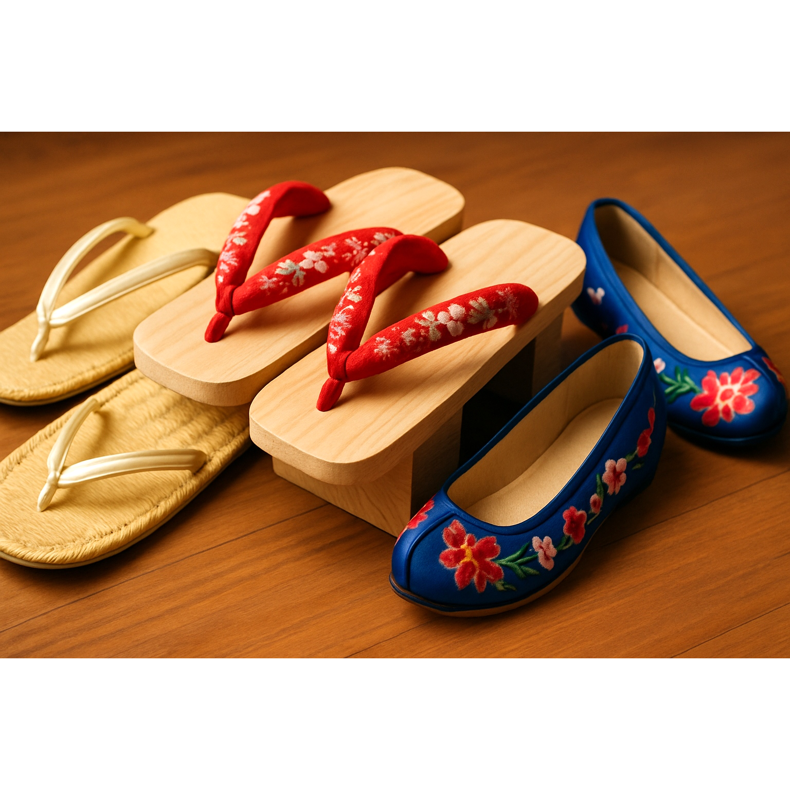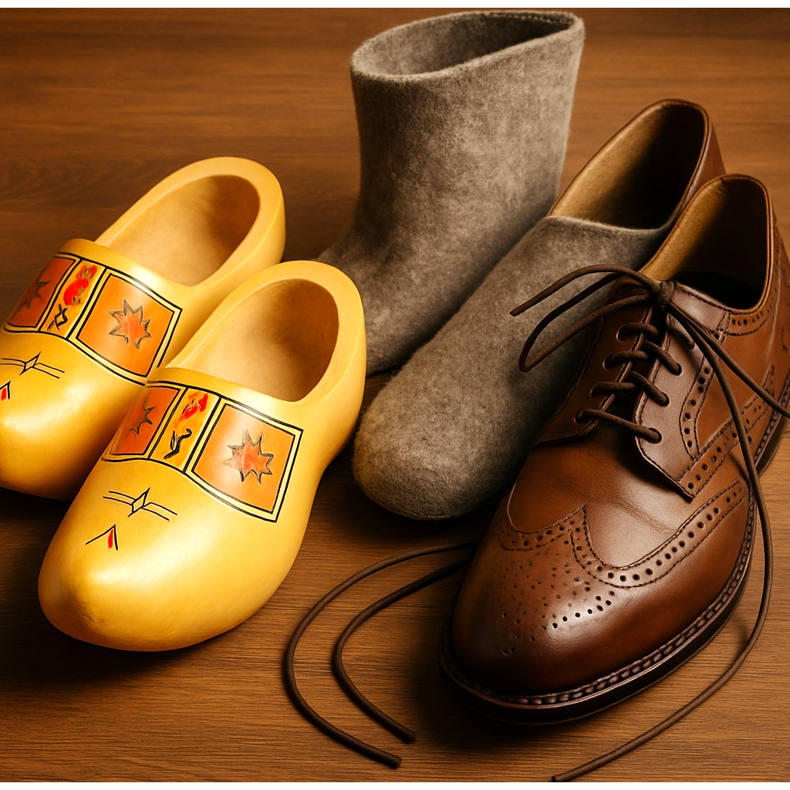
Shoes in different cultures of the world - a journey through traditional footwear
From Japanese geta clogs to Moroccan babushkas, each culture has created unique footwear adapted to its climate and traditions. Learn the fascinating stories of traditional shoes from around the world and discover how footwear reflects the cultural identity of nations.

Footwear as a carrier of culture and tradition
Footwear is not only a practical element of clothing, but also a carrier of culture, tradition and national identity. Various civilizations have developed unique footwear styles over the centuries to suit climate, terrain, and social customs. From Japanese clogs to African sandals made from car tires, each type of footwear tells a fascinating story.
The way people protect their feet reflects not only geographical conditions, but also cultural values and social hierarchy. In some cultures, taking off your shoes before entering the house is a sign of respect, in others, shoes remain on your feet all day long. These differences show how deeply footwear is rooted in our culture.
A journey through the world of footwear is also about discovering craftsmanship that has survived centuries. Traditional shoe-making techniques passed down from generation to generation constitute a valuable cultural heritage. Let's get to know the most interesting types of traditional footwear from different parts of the world.

Asian footwear traditions
Japanese geta and zori
Wooden geta sandals are an iconic element of Japanese culture. They are characterized by a wooden platform raised on two or three blocks, on which the foot is held by a strap passing between the toes. They were originally used to protect the kimono from mud and moisture. The height of the platforms could be up to fifteen centimeters, forcing very small steps, which was considered elegant. Zori are flat sandals worn in more formal circumstances, made of rice straw, wood or, today, rubber.
Chinese shoes with lotus feet
For a thousand years, China practiced binding the feet of young girls to create miniature feet that were considered beautiful. Women with bound feet wore special embroidered shoes only ten centimeters long. This painful practice was only banned in the twentieth century, but it left a lasting mark on the history of Chinese footwear.
Korean kkotsin
Traditional Korean shoes made of silk or cotton, richly decorated with embroidery depicting flowers and symbols of happiness. They were worn with a hanbok during ceremonies. They are characterized by a slightly upturned toe and a soft construction without a clear division into the left and right foot.

African survival champions
Moroccan babushkas
Traditional leather slippers without a heel, often richly decorated with embroidery and sequins. Babushkas are worn at home as protection against the cold, as well as elegant dress shoes. Their name comes from the Persian word meaning foot cover. Craftsmen in Fez have been making them by hand for centuries, using natural dyes and traditional leather tanning techniques.
Ethiopian chamma
Simple sandals made of leather, worn for thousands of years by shepherds and villagers. They are characterized by a minimal design - a piece of leather tied to the foot with straps. Despite their simplicity, they are extremely durable and perfect for walking on difficult terrain.
Masai sandals made of tires
A modern example of African ingenuity - sandals cut from used car tires. Durable, waterproof and virtually indestructible, they have become a symbol of recycling and sustainable development. Originally created out of necessity, today they are gaining popularity as an ecological alternative to traditional footwear.

European footwear heritage
Dutch dumplings
Wooden shoes typical of the Netherlands and other northern European countries. Entirely carved from a single piece of wood, they were perfect for protecting your feet while working in wet fields and stables. Even though today they are mainly used as tourist souvenirs, some farmers still wear them. Klomps are so comfortable that in the Netherlands there is a saying about walking on clouds in wooden shoes.
Russian valenki
Traditional seamless felt boots, perfect for cold Russian winters. Produced by rolling wet sheep wool, they are extremely warm and durable. In tsarist times they were a luxury available only to the rich, today they are a symbol of the Russian winter tradition. Similar shoes are also worn in Mongolia and Central Asia.
Scottish ghillie brogues
Traditional shoes worn with a kilt during ceremonies. They are characterized by long laces that wrap around the ankle and perforations on the upper. Originally they were the footwear of Scottish highlanders, today they are an indispensable element of ceremonial attire.

Footwear of the Americas
Mexican huaraches
Sandals woven from strips of leather according to the ancient pre-Columbian technique. The Indians created them by hand using thousands of years of old tradition. Modern huaraches retain the traditional design, although they often use colorful stripes and modern soles. They are worn both every day and during holidays.
Peruvian ojotas
Simple sandals made from recycled tire rubber, popular in the Andes. Like African tire sandals, they were created out of the need for cheap and durable footwear. Today, they are a symbol of Andean culture and an ecological approach to fashion.
Argentinian alpargatas
Espadrilles with a canvas upper and a woven jute or hemp sole. Traditionally worn by gauchos, they have become the national footwear of Argentina. Light and airy, perfect for the hot climate of the pampas.
Indian moccasins
Soft leather shoes of North American Indian tribes. Each tribe had its own characteristic pattern and decoration technique. Made of one piece of leather with beads, embroidery and fringes. To this day, moccasins remain an important part of Native American culture.